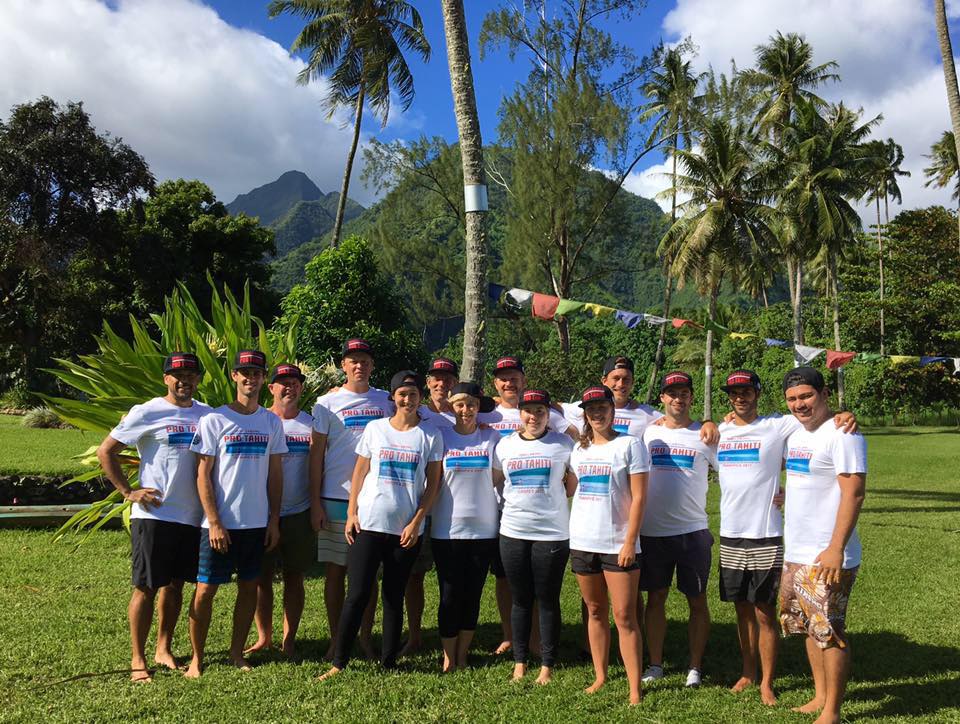
Last week I was in Tahiti at a seminar aimed at helping the surfing athlete to not only recover quickly from injury but to also surf better for longer.
Sitting in a beautifully crafted room with some of the brightest chiropractors, physio’s, and osteo’s I’ve ever met and being taught by generous, knowledgable and highly experienced teachers was definitely a career highlight for me.
It’s the second time I’ve met with the World Surf League (WSL) allied health team. I am inspired by the direction this multi practitioner team (lead by Dr Chris Prosser) is going.
At it’s best Tahiti’s most famous wave Teahupoo is epic. Super heavy and very steep. The break occurs on a southwest facing coral reef that is as shallow as… and there is nothing slowing down the swell as it approaches the reef because Tahiti is sitting smack bang in the middle of the pacific ocean with nothing between it and Patagonia. To get onto this powerful left hand wave the surfer has to paddle down the face of the wave and take the latest of drops while staring at craggy coral submerged just below the crystalline pacific ocean water. Just like Matehau in this clip.
So it’s no wonder that the professional surfing athlete will line up for high quality chiropractic care prior to, during, and after their surf. Guys like Mick Fanning, Joel Pakinson, Owen Wright and Kelly Slater all know the benefits of preparing the nervous system and musculoskeletal system to perform at it’s optimal level.
Balance occurs thanks to reflexes within the neuro-musculo-skeletal system, your body’s GPS system includes sensors in your inner ear, muscles and connective tissue, and vision. A well coordinated balance mechanism requires all three to work in harmony without interference. This doesn’t always happen.
Occasionally there is a failure of one or more of these sensors. In mild cases, symptoms of a poorly functioning balance system will be hard to detect but may be responsible for poor performance while surfing, overuse injury and pain. In extreme cases dizziness and vertigo will be the likely symptom, leaving the surfing athlete unable to even enter the water (Owen Wright is the best recent example of this after a severe concussion).
Balance is always important but the more time we spend in balance challenging scenarios the more important good balance becomes. Surfing, snowboarding and skating for example are significant balance challenging sports.
One potential scenario that may interfere with the ability to surf well and something that may lead to niggling injuries or worse is a lack of good quality messages reaching the brain from the musculoskeletal system (one of the 3 GPS sensors). In this situation, a thorough assessment should be performed to detect areas of interference.
At Village Chiropractic we use state of the art balance assessment technology and evidence based physical assessment protocols to determine where the interference may be occurring.
This allows us to accurately determine the cause of the balance dysfunction and formulate a solution.
We also prescribe exercises based on Dynamic Neuromuscular Stabilisation (DNS) as a technique to help athletes to manage their repair at home or while travelling.
It’s so rewarding for the practitioners supporting the WSL to see the athletes overcoming injuries and imbalances being able to function at their best and perform at their peak in competition but for me it’s even more rewarding helping the guys and gals who just want to get out there and enjoy their surfing at Manly Beach, Freshwater, Curl Curl and beyond.
If you’re planning a trip to Chopes, the Mentawai’s, or you’re noticing you’re not going as well as you’d like when paddling out on the northern beaches I suggest you get yourself checked. Your surfing may be suffering because you’re not balanced.
If you’re living close by I suggest you sign up for our next Surf Steady Session. This one hour movement session on Saturday mornings at 5.30am is designed to get you moving well before you paddle out on Saturday morning or stick around and join us for breakfast in Manly.